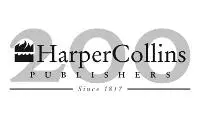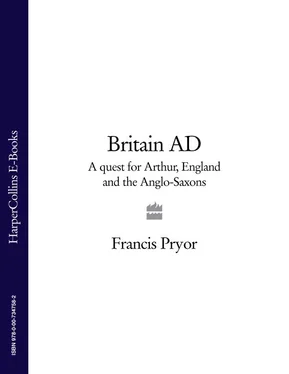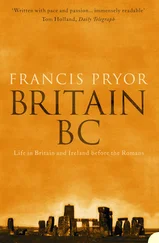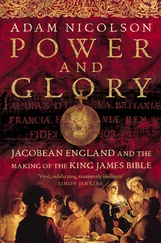A Quest for Arthur, England and the Anglo-Saxons


Copyright Copyright Dedication Epigraph INTRODUCTION CHAPTER ONE Origin Myths: Britons, Celts and Anglo-Saxons CHAPTER TWO The Origins and Legacy of Arthur CHAPTER THREE Ancient Britons CHAPTER FOUR My Roman Britain CHAPTER FIVE Late- and Post-Roman Britain: The Situation in the South and East CHAPTER SIX The ‘Anglo-Saxon’ Origins of England CHAPTER SEVEN Arthurian Britain: The Situation in the West and South-West CHAPTER EIGHT The Making of the English Landscape CHAPTER NINE Continuity and Change Conclusion Keep Reading Plates Text illustrations and Maps Notes Index Acknowledgements About the Author Other Books By About the Publisher
Harper Press
An imprint of HarperCollins Publishers Ltd. 1 London Bridge Street London SE1 9GF
www.harperpercollins.co.uk
First published by HarperCollins Publishers 2004
Copyright © Francis Pryor 2004
Francis Pryor asserts the moral right to be identified as the author of this book
Maps and diagrams by Leslie Robinson and Rex Nicholls
A catalogue record for this book is available from the British Library
All rights reserved under International and Pan-American Copyright Conventions. By payment of the required fees, you have been granted the non-exclusive, non-transferable right to access and read the text of this ebook on-screen. No part of this text may be reproduced, transmitted, down-loaded, decompiled, reverse engineered, or stored in or introduced into any information storage and retrieval system, in any form or by any means, whether electronic or mechanical, now known or hereinafter invented, without the express written permission of HarperCollins ebooks
This book is sold subject to the condition that it shall not, by way of trade or otherwise, be lent, re-sold, hired out or otherwise circulated without the publisher’s prior consent in any form of binding or cover other than that in which it is published and without a similar condition including this condition being imposed on the subsequent purchaser
HarperCollins Publishers has made every reasonable effort to ensure that any picture content and written content in this ebook has been included or removed in accordance with the contractual and technological constraints in operation at the time of publication
Source ISBN: 9780007181872
Ebook Edition © OCTOBER 2009 ISBN: 9780007347582
Version: 2017-01-05
For Maisie
From the reviews of Britain AD :
‘Controversial, deceptively clever and a damn good read’
BBC History Magazine
‘Pryor’s opinionated (yet fairly argued) text rollicks along, informed by a great deal of recent research and new discoveries…Eminently readable’
British Archaeology
‘Francis Pryor has been an eloquent advocate for a new, fascinating vision of the prehistoric past. After Seahenge and Britain BC , this book completes an exhilarating trilogy in which the received ideas of far too long are swept away’
Scotsman
Cover Page
Title Page BRITAIN A.D. A Quest for Arthur, England and the Anglo-Saxons
Copyright
Dedication
Epigraph
INTRODUCTION
CHAPTER ONE Origin Myths: Britons, Celts and Anglo-Saxons
CHAPTER TWO The Origins and Legacy of Arthur
CHAPTER THREE Ancient Britons
CHAPTER FOUR My Roman Britain
CHAPTER FIVE Late- and Post-Roman Britain: The Situation in the South and East
CHAPTER SIX The ‘Anglo-Saxon’ Origins of England
CHAPTER SEVEN Arthurian Britain: The Situation in the West and South-West
CHAPTER EIGHT The Making of the English Landscape
CHAPTER NINE Continuity and Change
Conclusion
Keep Reading
Plates
Text illustrations and Maps
Notes
Index
Acknowledgements
About the Author
Other Books By
About the Publisher
Britain ad is in a sense the third volume of an informal trilogy on the archaeology and early history of Britain. It was not planned as a trilogy from the outset, because the idea only came to me gradually, as I was writing the first of the three books, Seahenge . I knew then that I had to write Britain bc , and in my heart of hearts I also wanted very much to tackle the challenge posed by the collapse of Roman rule and the onset of the so-called ‘Dark Ages’ of the fifth to seventh centuries ad. But I felt more than a little daunted by the task. It was the writing of Britain bc that gave me the broader perspective and confidence to undertake the present work.
As I worked on Seahenge , I became aware that I was writing a book about what archaeologists refer to as ‘process’: the methods, approaches and techniques whereby archaeology is actually done. In that sense, Seahenge is a book less specifically about Britain than the other two; but if you read Seahenge first you will derive more from the Britain books, because you will better understand the thought processes behind the work of the various archaeologists and historians involved. Incidentally, I should add here that Mark Brennand and Maisie Taylor have written the full detailed, academic report on that most remarkable of sites. 1Their detailed analysis of the fifty-five timbers—the way they were worked and how they were positioned—has given us a unique insight into the way Early Bronze Age people viewed their world. I do not think it is an exaggeration to say that it has transformed our understanding of Early Bronze Age ritual and religion, and has confirmed many theories that had hitherto been based largely on speculation.
My approach is a personal one. I believe with some passion that archaeology is a personal discipline, and consider it misleading to suggest that there are such things as impersonal, dispassionate or objective archaeological books, just as there are no absolute facts in archaeology, other than the objects themselves. The objects are facts, but anything we attribute to them is interpretation. You may think that a term like ‘cremation urn’ has to be factual; but that presupposes that we all agree on what constitutes a cremation—and here, as elsewhere, there are many grounds for argument. If archaeologists and historians care about their subject, they will have axes to grind, and I prefer to sharpen mine in public.
In all my books I have tried to think and write in time-depth, because I am convinced that the fundamental attitudes underlying human society take a long time to change. Such a long-term view of British history and prehistory would have been impossible without the work of the Venerable Bede, who was one of the ablest minds of all time. It was Bede, in his great Historia Ecclesiastica Gentis Anglorum (Ecclesiastical History of the English People), which he completed in the year 731, who introduced the system of BC/AD to British history. 2
In Britain BC I used archaeology to give an impression of what it might have been like to have been alive in the supposedly anonymous and faceless world of prehistoric times. Prehistory, incidentally, is the name given to the study of human history before the advent of writing and written records, which arrived in Britain with the Roman Conquest of AD 43. Too often it is portrayed as a time when individuals, who of course could not be identified, did not matter. So they have tended to be forgotten, their humanity replaced by explanations that assume that prehistoric people somehow lacked free will. In the past prehistorians were too ready to attribute social and cultural innovation to external processes such as migration, economic collapse and environmental change. By approaching their subject in this cold-blooded way, they dehumanised it and made ancient people appear like machines that merely responded to various stimuli in a predictable fashion. This was far too mechanistic for my taste: I prefer my archaeology, like my friends, to be human, fallible and hard to explain. But for some reason nearly all archaeologists detest unsolved mysteries; they would prefer any explanation to no explanation.
Читать дальше














